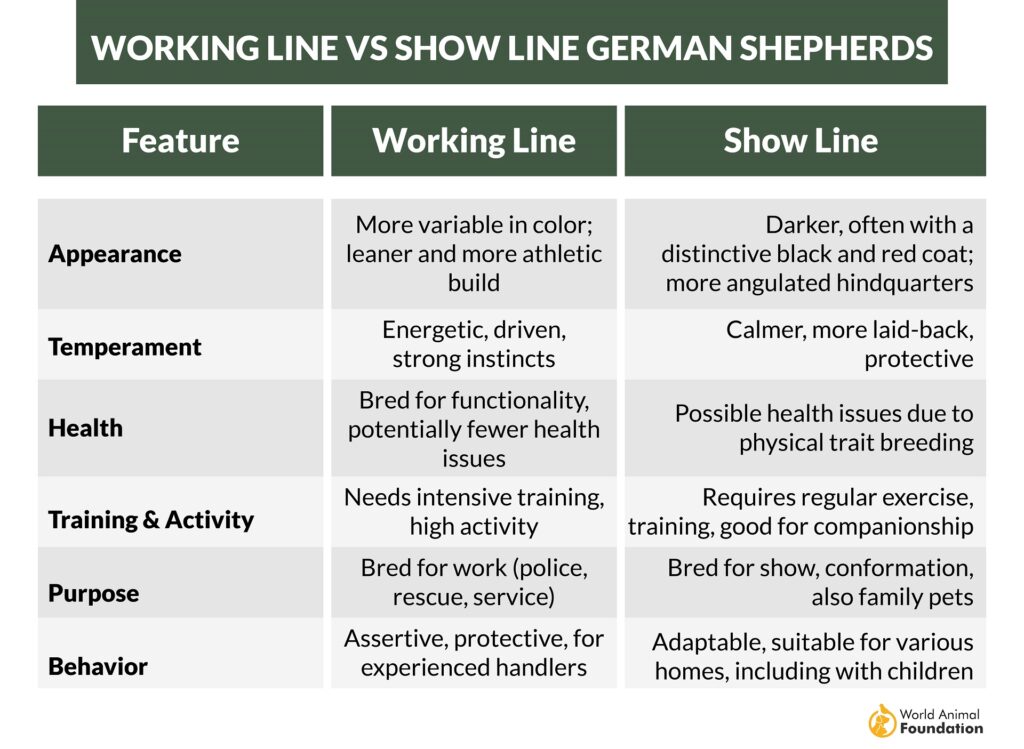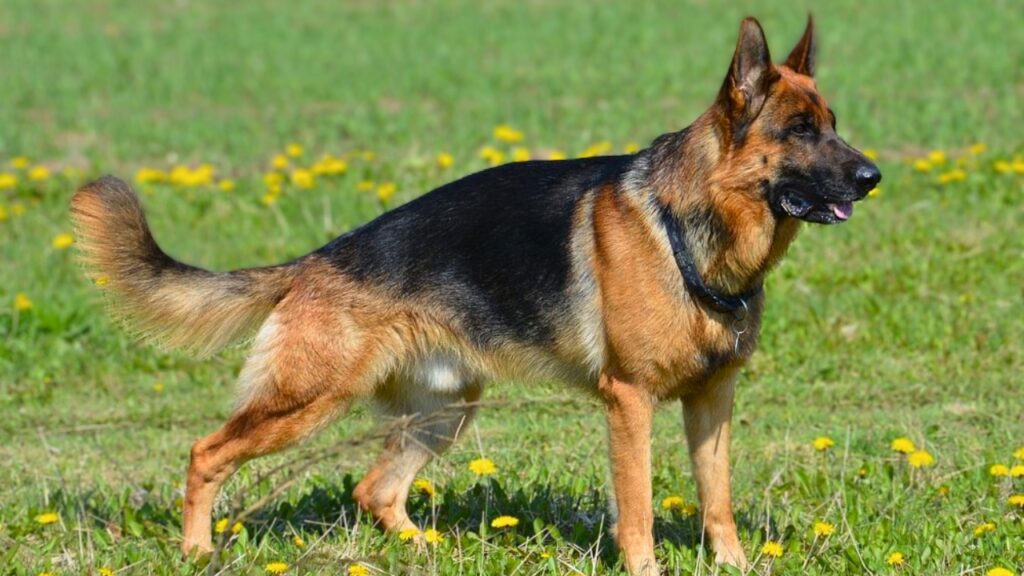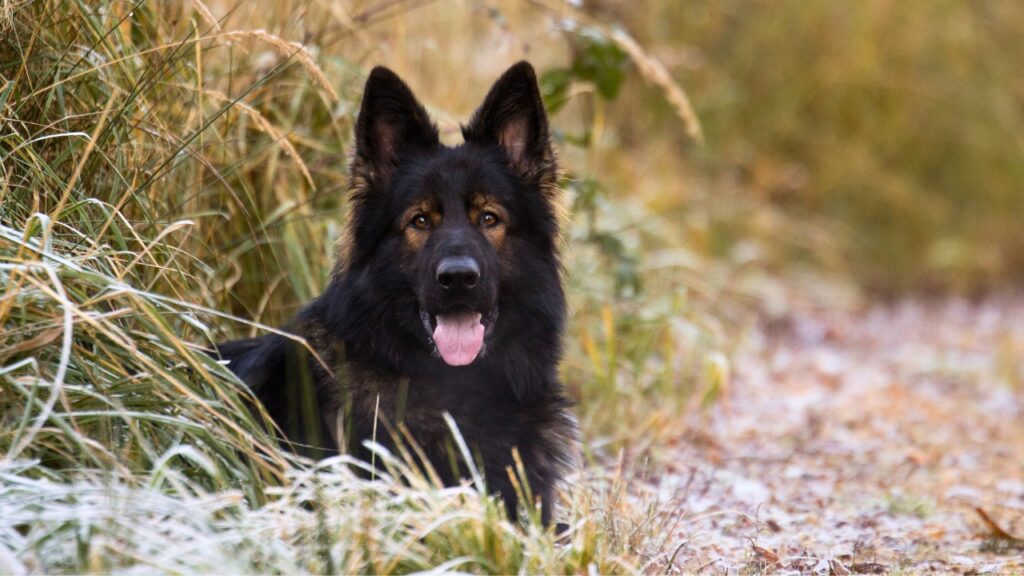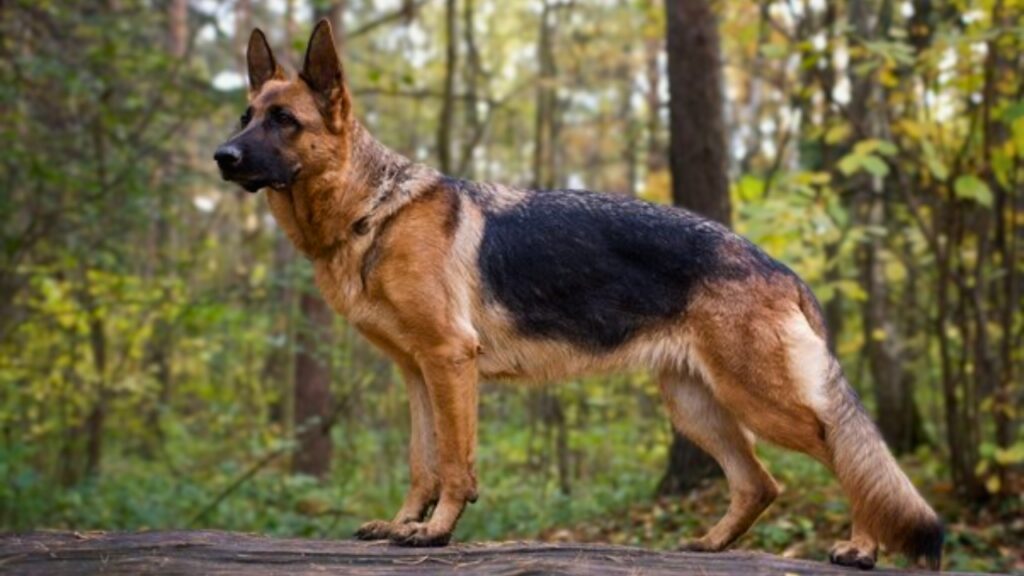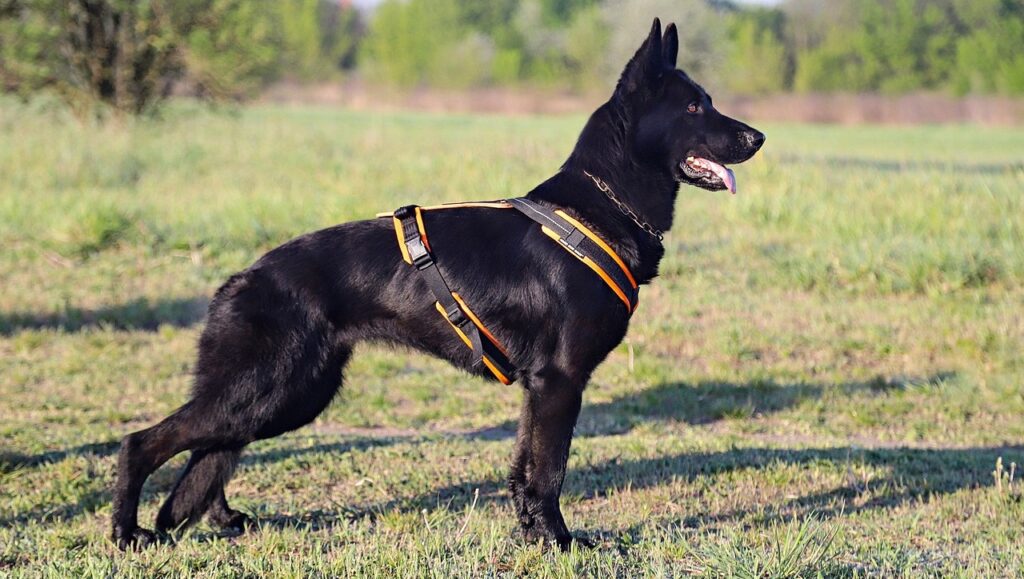The German Shepherd. A name synonymous with loyalty, intelligence, and versatility. But did you know this iconic breed encompasses distinct variations, each with its own unique characteristics? From the classic sable coat of the standard German Shepherd to the striking all-black appearance of the black German Shepherd, there’s more to these remarkable dogs than meets the eye. This article will delve into five distinct types of German Shepherds, exploring their temperaments, physical attributes, and what makes them uniquely captivating. Prepare to discover the diverse world within the world of German Shepherds.
German Shepherds are awesome dogs and super popular all over the world! They were first bred in Germany and are known for being really smart, protective, and good-looking. They come in medium to large sizes and are great at lots of tasks because they’re strong and love to listen.
A guy named Max von Stephanitz created the breed. He wanted to make the perfect dog that could work well and look great doing it. German Shepherds started out helping with sheep and guarding places, especially during wars.
German Shepherds are always among the top favorites on the AKC’s list of most popular breeds, and for good reason. Their unmatched loyalty, bravery, self-assurance, learning capability, and dedication to protecting their loved ones set them apart from all other breeds.
Thinking about getting a German Shepherd dog? It’s a good idea to learn about the five different types to find the best one for you.
Types of German Shepherds
German Shepherds fall into two main groups: the working line and the show line, each with its own type. Working line German Shepherds are the go-to dogs for military, police, and Special Forces roles, known for their exceptional skills.
@x_.edits_.for_.animals_x
police dog #policedogs #fyyyyyyyyyyyyyyyy #germanshepherd#gsdk9edit #training #angrydogs #policedogs
♬ πρωτότυπος ήχος – 𝓪𝓷𝓲𝓶𝓪𝓵𝓼 𝓺𝓾𝓮𝓮𝓷
On the other hand, show-line German Shepherds are often seen as more “friendly” and make ideal family pets.
Working line
Working Line German Shepherds are the athletes of their breed, with a straight back and a build made for endless activity. They’re stronger, with larger heads and thicker bones, crafted for constant work. True to their “Working Line” name, these dogs are always on the go, never lazy, and full of energy and drive.
They’re built for long days of work and don’t tire easily. These dogs need a lot of your time and energy to stay happy and healthy. If they don’t get enough exercise and mental challenges, they might start acting out in ways you wouldn’t like.
Not only are they high-energy, but working line German Shepherds are also generally healthier and less likely to get sick compared to show line Shepherds. This is because their gene pool is more varied, helping them avoid many common genetic issues. Plus, their active lifestyle keeps them in tip-top shape, with strong muscles and better overall health.
West-German Shepherd
West German Working Line German Shepherds are thought to be the closest to the original vision of the breed’s founder, Max von Stephanitz. They’re not just good-looking; they’re born to work. Typically, they’re slightly smaller than their show-line counterparts, but what they lack in size, they make up for in heart and resilience.
These dogs are bred for a high pain tolerance and a sturdy build, often sporting a sable coat, though black and tan or a mix of sable and black are also common.
They’re incredibly smart, a must for the demanding work they do, like police and detective roles where quick thinking can save lives. Their high energy and strong prey drive mean they excel in active roles and can get restless without enough to do, potentially leading to anxiety or mischief.
Despite their intense work ethic, West Working Line GSDs have a remarkable ability to know when it’s time to work and when it’s time to be calm, making them great family pets for those ready to meet their needs. With a bit of extra effort and commitment, they can adapt well to being beloved pets.
East German DDR German Shepherd
East German DDR Working Lines German Shepherds, much like their West German counterparts, were bred with a strong work ethic and a natural guarding instinct. They share a similar history, both developed for their eagerness to work and protect. These dogs are recognized for their ideal working build, large heads, substantial bone structure, and dark coloring.
Their natural prey drive means they should be watched around other animals and small children to prevent instinctual behaviors from kicking in. However, not all DDR Shepherds have a high prey drive; some are very gentle and calm. Generally, they tend to be more reserved and defensive, with incredible focus and stamina that make them excellent for demanding work or guard roles.
East German DDRs often have the sable coat that’s characteristic of German Shepherds, though theirs tend to be darker, sometimes even black. They are highly intelligent but can be wary of strangers, making them better suited as working dogs or guard dogs rather than family pets.
While they’re capable of being gentle outside of work, their need for extensive training and exercise makes them a significant commitment for families, especially those with young children.
Czech German Shepherd
The Czech Working Line German Shepherds are known for being the more compact variety of the breed. They’re a bit leaner than other working lines, giving them a nimble edge. They’re the late bloomers among their peers, taking a bit longer to reach full maturity. Looks-wise, they often sport a sable or “agouti” coat, which is a beautiful blend of black and tan colors.
Their coats can be short or rough but are quite easy to care for, making maintenance a breeze. Czech Shepherds are particularly valued in search and rescue operations due to their excellent work structure and high drive for work.
They shine in obedience, agility, and protection sports, thriving on intense mental and physical challenges. Originally, they were among the most prey-driven, contributing to their remarkable stamina and agility.
Over time, while they’ve become somewhat less intense, their strong inclination for work remains unchanged. Contrary to some beliefs, Czech Working Line Shepherds are quite intelligent and can make wonderful family pets, offering a friendlier alternative to the more stranger-wary East German DDR Working Lines.
Show line
@jessygabriel7
Replying to @beckyrva #germanshepherd #dog #akc vs german / international shows. #dogs #pets can yoy see the differnexe in the looks of an american vs. a european #fyp
♬ original sound – Jessy’s Dog World
Showline German Shepherds are the go-to for many first-time dog owners and families, thanks to their friendlier nature and lower energy levels compared to the working line. People choose show line German Shepherds for a variety of reasons as they’re known for being more approachable and easy-going.
They require less time and effort to manage than their working line counterparts, and they tend to be less costly. They make excellent companion dogs, offering loyalty and affection.
While show-line German Shepherds can perform many of the same tasks as working line dogs, the working line typically excels in specific jobs due to their higher energy and drive. However, when it comes to being a family pet, the show line often stands out as the better choice because of its more relaxed and adaptable temperament.
American German Shepherd
American Show Line German Shepherds are known for their elegance, being taller and longer than other types. They dazzle in various colors, including the classic black and tan saddle, striking solid black, beautiful saddle sable, and even unique solid white.
Bred primarily for show, they demand a bit more grooming and care to keep their longer coats looking their best, although it’s somewhat easier than managing the coats of other show dog breeds.
While they possess a lower drive, meaning they’re not as high-energy as Working Line German Shepherds, they still make fantastic family pets. They’re very obedient, excel in tracking, and are surprisingly good at herding sheep. However, they might not be the first choice for working or guarding duties due to their focus on show characteristics.
Despite their suitability as pets, American German Shepherds can be wary of strangers and may display a lot of energy, necessitating regular exercise and mental stimulation. This is crucial in preventing the development of unwanted behaviors that often stem from boredom.
European German Shepherd
European Show Line German Shepherds, much like their American Show Line counterparts, are bred for their appearance and show qualities. However, they have shorter coats, which means they don’t require as much grooming. West Show Line German Shepherds are often admired for their striking colors, including black and red saddles, black and tan, sable, bi-colors, and black.
While they share the show-oriented breeding with American Show Lines, European Show Lines are more versatile, frequently serving as service dogs or guard animals. This makes them exceptionally good both as protectors and as family pets, offering a balance that might be more appealing than the American Show Lines.
These dogs are anything but lazy; they crave plenty of exercise and training to stay healthy and happy. Known for their superior health and drive compared to the American lines, European Show Line German Shepherds can be wonderful companions, assuming their owners are ready to meet their needs for physical and mental activity.
Types Based on German Shepherd Coat Colors
According to studies by the American Kennel Club (AKC), German Shepherd dogs can come in 11 different coat colors. These include black, black & cream, black & red, black & silver, black & tan, blue, gray, liver, sable, white, and bi-color. This variety showcases the breed’s diversity in appearance, allowing for a wide range of looks within the same breed.
Saddle colored
The name perfectly captures their look – they have a distinct pattern that resembles a saddle or a blanket draped over their back. The base of their fur is typically tan or red, contrasted sharply by the black color of the ‘saddle’ or ‘blanket’ area, creating a striking and recognizable appearance.
Sable German Shepherd
Known as Agouti in some places, this type of German Shepherd has a unique color pattern that covers their entire body. When they’re puppies, their coat begins as tan, but as they grow, the colors deepen and intensify, blending into a striking mix of black, gray, tan, or gold. This pattern gives sable German Shepherds a distinctive and varied appearance that becomes more pronounced with age.
White German Shepherd
It’s also fascinating to note the variety in German Shepherd coat colors, such as the rare white German Shepherds. Contrary to some beliefs, white does not indicate albinism nor does it mean they’re a different breed, like Samoyeds; they’re simply a rarer color variant of the German Shepherd.
View this post on Instagram
The white coat, interestingly, results from dominant genes, which is somewhat unique in the genetic coloring dynamics of dogs.
Black German Shepherd
Black German Shepherds might sometimes display hints of liver or blue in their coats, adding a subtle variety to their overall black appearance. However, for competitive purposes, they are generally required to have a solid color coat.
@rehmanahmed143
#dog #germanshepherd #foryou #black
♬ original sound – USMAN
The presence of a black coat in German Shepherds is due to recessive genes, meaning both parents must carry the gene for a puppy to be black.
Final Thought
Exploring the diverse world of German Shepherds offers potential owners a glimpse into the breed’s rich history and variety. From the first German Shepherd dog, recognized for its intelligence and versatility, to the distinct lines like the show line and working line German Shepherds, each type presents unique traits and purposes.
Show-line German Shepherd dogs dazzle with their appearance and temperament, making them favorites among those looking for a family pet or a dog to participate in shows. Meanwhile, working-line German Shepherd dogs, including Czech German Shepherds and West German Shepherds, are valued for their incredible work ethic and abilities in fields like search and rescue, police work, and military roles.
For those seeking variations of the traditional German Shepherd, breeds like King Shepherd and Shiloh Shepherd offer alternatives with specific characteristics, such as size and temperament, while maintaining some of the German Shepherd’s best qualities. Whether you’re a first-time German Shepherd owner or looking to add a German Shepherd puppy to your family, understanding these types can help you find the perfect match.
The German Shepherd’s versatility is reflected in the breed’s distinct variations. From the classic working line’s intense drive to the show line’s striking appearance and the rarer long-coated and white varieties, each type boasts unique traits and temperaments. Understanding these differences is crucial for prospective owners. Whether seeking a devoted family companion, a vigilant protector, or a dedicated working dog, researching the various German Shepherd types allows for informed decisions and ensures a harmonious match between owner and this remarkable breed.


